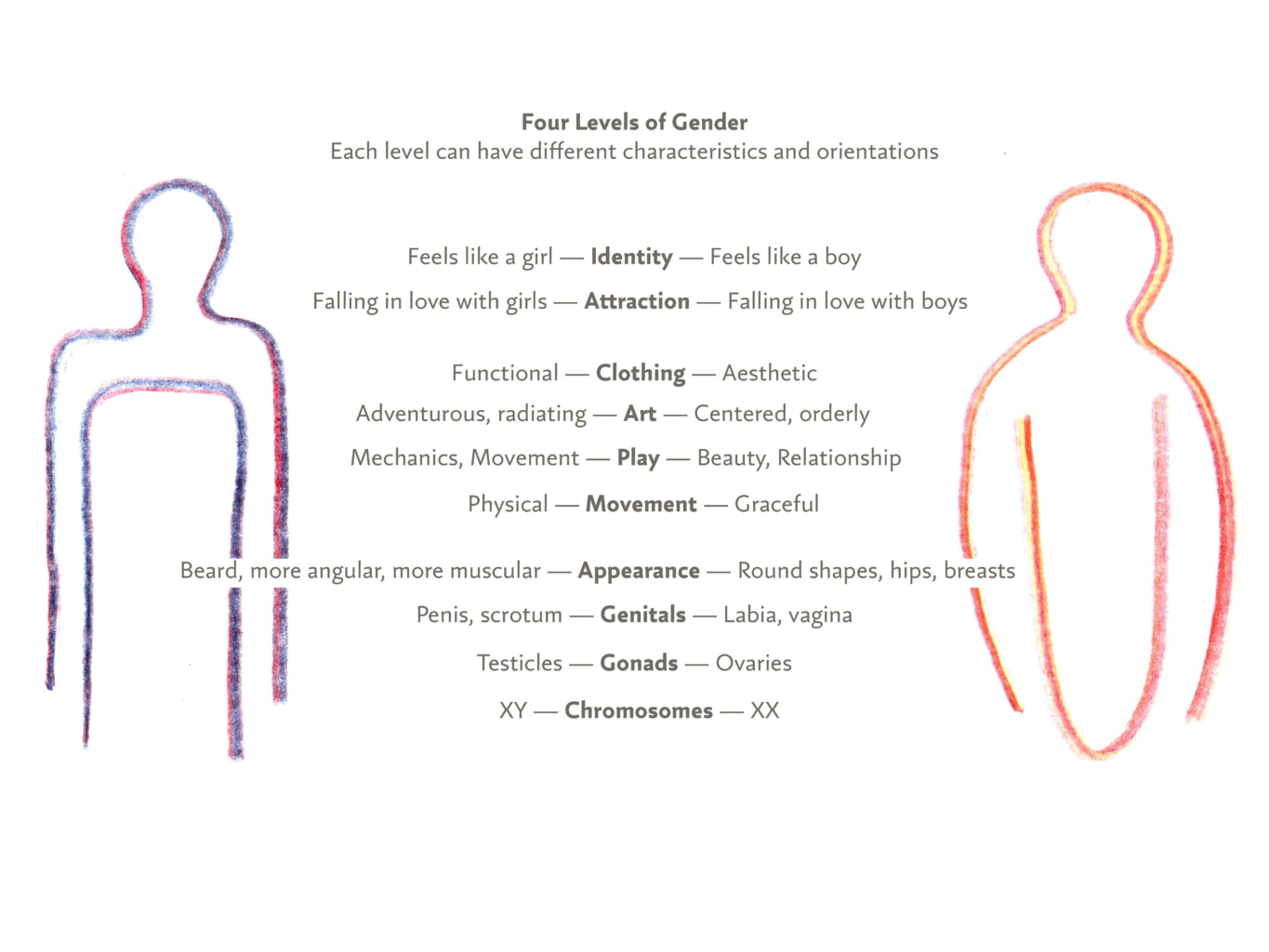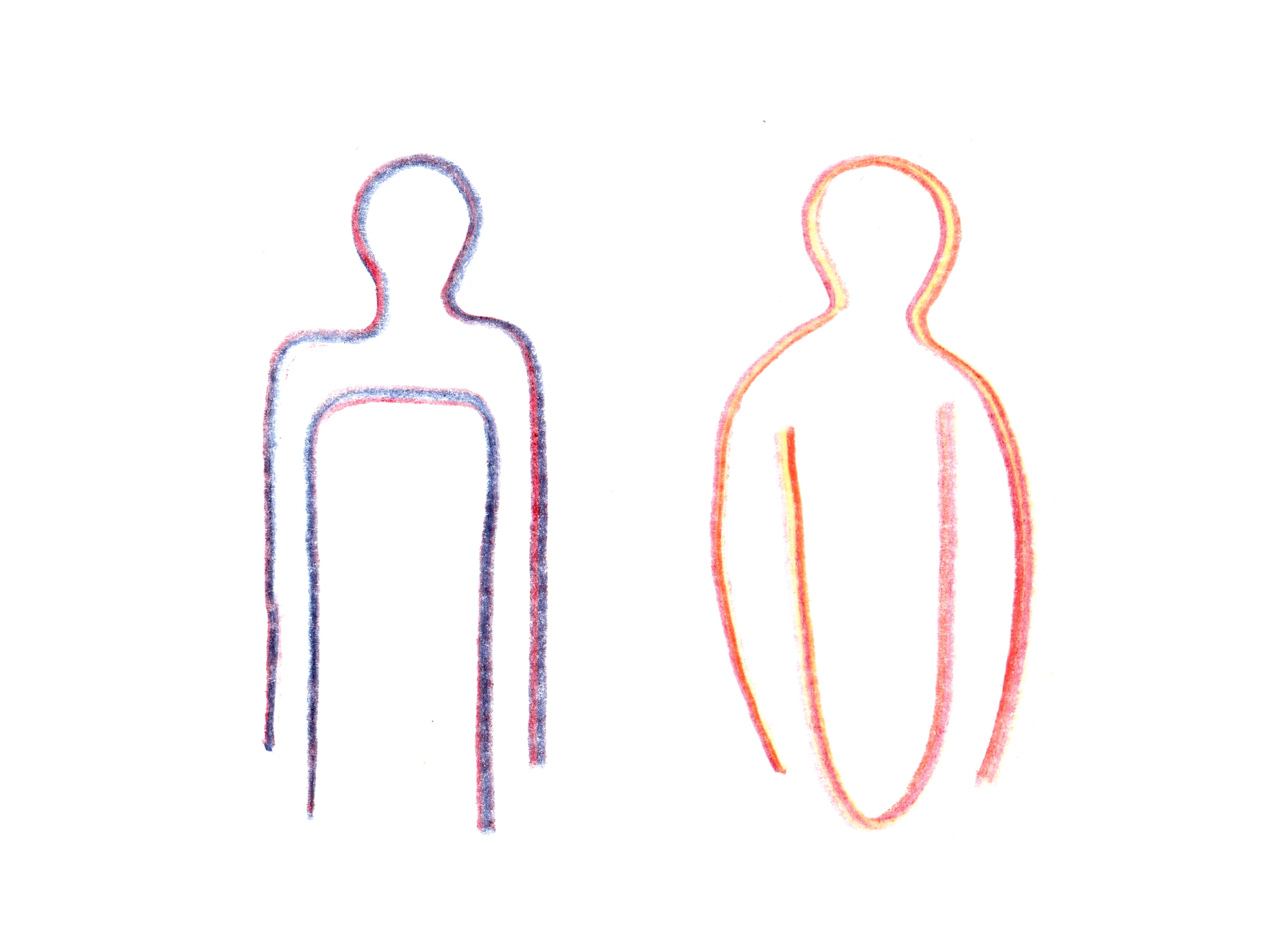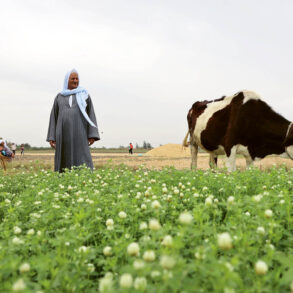Since 2013, “gender dysphoria” has been the official diagnostic term for people who experience their gender identity differently from what they were assigned at birth. Today, the possibilities for change of gender at all levels are greater than ever. This raises questions about the medical treatment of those affected, especially in the case of children and adolescents. In this realm it is of utmost importance that doctors train their perception and meet their patients person-to-person.
How do you perceive yourself right now, as a man, woman, or neither? How would another gender feel to you, if you slipped into that role? When I make myself conscious of how I am dressed and represent myself as a woman instead of a man, it changes a lot in me. Even though much has changed in our culture, there is still a classic, perhaps, stereotypical gender perception and role allocation between men and women. For some, this is perfectly appropriate; for others, it is not appropriate at all. Around 1,200 out of 100,000 people, i.e., 1.2%, feel uncomfortable with their gender assignment, and three out of 100,000 women and eight out of 100,000 men feel so uncomfortable in the body they were given at birth that they seek a surgical change.1
What is coming up more and more in our culture has been known for a long time in endocrinology: the body entails a spectrum of possibilities. A genetically male embryo in the mother’s body that is exposed to subnormal levels of testosterone cannot fully develop the male sex organs. Defects in steroid synthesis can lead a genetically female embryo to develop various degrees of masculinization, all the way to fully male outer genitalia, depending on the dose of testosterone to which they are exposed. The formation of our gender-associated feelings, inclinations, and behaviors depends on both our inner and outer environment and, therefore, will always be shaped in a manifold way. There is a spectrum of genders and not just two poles, as dictated by the historically evolved distribution of roles in most countries.
Being Able to Bring Oneself Forth
“Gender” is related to “genesis.” It is about “bringing forth.” There is something in us that comes forth—that comes into the world and brings about a body. This creative being needs the feeling that it fits together with the body and can, to a certain extent, learn to cope with what it is. How do we deal with “gender,” and how do we learn to cope with our own gender? The German sexologist Magnus Hirschfeld (1868–1935) wrote about gender transitions as early as 1905 and about transvestism in 1910. The topic of “genderedness” in psychology was further explored by Madison Bentley (1870–1955) in the USA. Simone de Beauvoir (1908–1986), who set milestones for feminism, wrote in her main work, The Second Sex, that no one is born a woman but rather is made into one. Rudolf Steiner had already written in The Philosophy of Spiritual Activity in 1894, “The man sees in the woman, the woman in the man, almost always too much of the general character of the opposite sex and too little of the individual.”2 In the same chapter, he indicates the “inhumane” treatment of women “as generic beings” and states an urgent need for social change.
Today, equality looks better, although there are many situations in which we operate within gender clichés. Nevertheless, a global imbalance is still operant, for example, in the unequal pay between men and women in the same positions of responsibility (the gender pay gap.) This gap is especially large in societies that are more conservative. However, simply condemning the underlying attitudes is not helpful. From their own perspective, many members of such societies may believe they have to protect women from a masculine world, and there are women who want this kind of “womanhood.” Instead of passing judgment, we are asked to diversify our perspective on gender.
For centuries, all over the world, there are and have been groups of people in diverse gender roles. For example, the Hijra in Bangladesh—men who live as women, or the burrnesha (“sworn virgins”) in Selca, Albania—women who took on the male role in a family when a man was otherwise absent.3
John Money (1921–2006), a native New Zealander working in the USA, was the first psychologist to experiment with gender in extreme ways. After a failed circumcision, the Reimer family sought out Money, and he advised them to turn their mutilated son into a girl through education. He later published that it had been successful and therefore described gender as a social construct. However, this example of psychological manipulation of an entire family had terrible consequences. Initially, the family did not take much notice of the child’s self-expression. When this “daughter” became severely depressed in puberty and refused to continue seeing the psychologist Money, the parents revealed the truth to “her,” and “she” immediately wanted to become a boy again, which “she” did. Nevertheless, the psychological strain remained immense. The twin brother became schizophrenic and committed suicide at age 36. And the “son,” who had become a boy again, although he married and adopted children, suffered so much that, two years after his brother, at age 38, he also took his own life.
Nowadays, we know a lot more about external and internal imprinting. There are numerous studies on child and gender development—for example, how hormonal influences in the embryonic period affect not only biological gender development but also the child’s later behavior.4 In research on toys, there are some studies that show that there are gender-specific preferences, both for the colors pink and blue and for orientation towards either the aesthetic and relational in girls or the mechanical in boys.5 Although these preferences are highly variable and modifiable by education and by the mere presence of male or female parents, they also have a clearly gender-dependent component. It is also extremely interesting that the interest in changing gender is overall significantly higher in men than in women,6 despite the fact that it could be argued that women face more difficulties in society than men!
In the documentary film Mädchenseele (Girl-Hearted), the mother knew she would be giving birth to a boy and very much looked forward to it, buying typical boy clothes, etc. However, at a very early age, the boy wanted to become a girl and behaved like a typical girl. Even as a child, “her” greatest wish was to have gender reassignment surgery.7 Her mother told her she must wait until she was old enough to get a driver’s license. We can imagine how challenging it is for parents and practitioners who accompany such children.
Naturally, in order to understand these multifaceted phenomena, we want to know the causes behind them. In 2022, a study was conducted of over 2,500 siblings of transgender people, including 67 pairs of identical and fraternal twins. None of the same-sex twin siblings of transgender people were themselves transgender, but a highly above-average number of the opposite-sex twin siblings were also transgender.8 This speaks against a genetic predisposition but could be compatible with biological imprinting by an opposite-sex twin sibling, which led me to formulate the hypothesis that one possible cause for transgender could be that an undetected twin of the opposite sex had died at an early stage in utero.

The Beginning of the Diagnosis
Although there have always been people who lived beyond the male-female identification or who felt uncomfortable with their ascribed or biological gender, there was no official diagnosis with an ICD (International Classification of Diseases) code for this until 2013. The description of “gender dysphoria” is therefore still relatively new and for a long time it was rarely diagnosed due to a lack of concepts.
My first practical case with transgender was with an adolescent patient who came to the clinic in 2014 due to constant stomach ache. We tried many things but nothing helped her, until we had a conversation and realized that, despite her physical assignment to the female gender, the girl felt more like a boy in her behavior, relationships, and self-identification. She even wrote stories on the internet for many readers under a male pseudonym. She revealed that she would like to be the boy who was the author of her writings. I offered the possibility to explore this in conversation together and asked if it would be good for her if I addressed “her” as “him” and used the male pen name. We agreed, and after a while our team extended this agreement to everyone on the ward who interacted with the patient. From then on, he was treated like a boy on the ward.
What was interesting for me was that in our subsequent conversations, I experienced a striking change in his presence. He had always been quite ingenious in conversation, but under the new conditions I sensed a truly real encounter, from ‘I’ to ‘I’. The nebulousness that had always crept forward before had disappeared—now, there was a clear individual before me. The therapists who worked with him also related a similar impression. He was very afraid to tell his mother, and in fact she reacted very defensively and was overwhelmed at first: “That’s not possible; You can’t do that! You can’t go to school like that. What will your grandpa say?” And so on. He had to go back to the family as a girl and the stomach pains returned. Later, he was able to change schools and immediately switched to a male name, which the new school accepted. From then on, he blossomed and his mother told me about the lovely evenings they spent together and how ingenious this young person was
The Perception of Each Individual Case Counts
When children come with their parents and say that they feel they are in the wrong body, doctors are confronted with a situation that can be very difficult to assess. A challenging aspect of counseling is the knowledge that 6–7% of those who undergo hormonal and surgical gender reassignment later return to their original gender.9 Importantly, surveys have also shown that children who grow up with transgender parents or rainbow parents are no different from other children in the sense that when the parents’ relationship and communication in the family are good, these children also feel good.10 These days, I am rarely in the role of being a central actor during the discovery of the self-identification of the patient: most of the time, the picture is already entirely “clear” by the time of my consultation. In certain cases, it is so obvious to everyone involved that it feels wrong not to prescribe hormonal puberty blockers. In other cases, the symptoms don’t fit together, and ways are sought to resolve discrepancies. In all situations, the most important thing is to give it time and inner space.
The clarification of each case is so demanding for the doctors and therapists because they (together with a psychological team) make a decision that, in every case, has irreversible consequences. Just like in naturally occurring puberty, treatment with sex-changing hormones brings irreversible changes for those affected. Treatment with puberty blockers is also not without consequences. Hormone blockers are a fantastic invention from breast cancer therapy and a blessing if you are confronted with a child who starts puberty at, for example, the age of four (pubertas praecox). They are also used as a treatment for adolescents who definitely do not want to let their bodies develop the secondary gender characteristics of a gender they cannot identify with. The monthly injection continuously stimulates the pituitary gland in such a way that the onset of puberty is halted. For children who find themselves in this situation, where they experience something happening to their body that they definitely don’t want, this is a great relief that gives them some time to decide. When the hormone blockers are stopped, puberty starts again. Naturally, the time that has elapsed cannot be recovered, and if the hormone blockers are administered for too long, bone density may decrease, as estrogen and testosterone are needed for bone formation during puberty. It is doubtful whether this is clinically significant, as eunuchs have been reported to live longer than other men.
Despite this complex weighing of risks, the challenge is even greater when a decision has to be made about administering hormones that cause a change in gender expression that cannot fully be biologically reversed. I can recount one of my more recent experiences with a patient as an example. A young person came for consultation who was considered to be a girl and was suffering from anorexia. In the psychotherapeutic treatment for the eating disorder, it became clear that this young person felt like a boy and that the anorexia was a way of preventing puberty. The parents and school community already knew this and came to terms with it. Now, this young person wanted to be treated hormonally: first, with puberty blockers, and then, with testosterone. In such cases, all I have is my own perception—I have to trust my impression of this human being.
To support this process, I always obtain two additional specialist consultations. These reports are a burden for the patient, but given the responsibility, I think it’s important. In this case, both specialist consultations came to the same judgment as I did: administration of testosterone was justifiable and in the best interests of the patient. Of course, the irreversible consequences of hormone administration must be explained in detail in advance. The therapy begins with a small dose, which is then increased. After just a few months, it became apparent that the patient and everyone involved were doing very well with this decision. Now, five years later, it still seems to be the right decision. Interestingly, as soon as treatment started, even before any outer changes were perceivable, the patient felt more stable in themselves and did not feel hurt when the receptionist used the girl name that was still in his electronic files. It is wonderful when this decision-making process is successful.
Another aspect of the situation becomes apparent when such a transitioning person returns to school with a lot of new charisma and energy. They sometimes draw attention to themselves, and other young people wonder whether they, too, are experiencing something similar. They go online and have access to a lot of reports, and—especially as adolescents with impressionable brains—they can absorb this in such a way that they then can convince themselves and others that they are also transgender. Doctors and therapists are thereby faced with even greater challenges today. There are many situations in which I conclude that I can not endorse a transition process in a particular person, because something does not seem right. Then, I have to tell those affected that if they want to go down this path, they need to find different medical guidance or, if they are also unsure, we can take time to explore the situation together, but I am not prepared to initiate hormonal treatment. Again, all one can rely on is the perception of the human being in front of them and of those around the patient, and perhaps of fellow therapists, and one’s own intuition.
Relationships Are Unique
The four levels of gender that we can orientate ourselves by are physical (chromosomes, gonads, genitals, appearance), personal expression (movement, play, art, clothing), attraction (whom do I fall in love with?), and identity (which gender do I feel I belong to?) (See diagram). These result in a diverse spectrum in which we move as human beings, and it is our task as doctors, therapists, educators, and psychologists to discover what this means for each individual human being and, in our dealings with each other, always anew.
There are many examples of the wide range of genders and how diverse our lives can be. I share this with children and young people during counseling, helping them to see the very different possibilities that are available with and without gender reassignment so as not to rush into a decision too early. Sexuality is something very intimate, and it’s not the same with every partner. It might therefore also be worth waiting to find out who one’s partner can and will be and how their reciprocal sexuality might be shaped. I also reference this in my role as a doctor. In the animal world, there are many examples of the most diverse forms of partnership, sexuality, and family; with human beings, it is highly individualized.
Translation Joshua Kelberman
Footnotes
- K.J. Zucker, “Epidemiology of Gender Dysphoria and Transgender Identity,” Sex Health 14, no. 5 (Oct. 2017): 404–411, doi: 10.1071/SH17067, PMID: 28838353.
- Rudolf Steiner, The Philosophy of Spiritual Activity: Fundamental Features of a Modern Worldview. Results of Soul Observation According to the Natural-scientific Method, CW 4 (Tiburon, CA: Chadwick Library Press, 2020), ch. 14, “Individuality and Type.”
- Dickerson, Carly. “The linguistic expression of gender identity: Albania’s ‘sworn virgins’” International Journal of the Sociology of Language, vol. 2019, no. 256, 2019, pp. 57-83.
- P. Escudero, R.A. Robbins, S.P. Johnson, “Sex-Related Preferences for Real and Doll Faces versus Real and Toy Objects in Young Infants and Adults,” Journal of Experimental Child Psychology 116, no. 2 (Oct. 2013): 367–79, doi: 10.1016/j.jecp.2013.07.001.
- L. Liu, P. Escudero, C. Quattropani, R. A. Robbins, “Factors Affecting Infant Toy Preferences: Age, Gender, Experience, Motor Development, and Parental Attitude,” Infancy 25, no. 5 (Sep. 2020): 593–617, doi: 10.1111/infa.12352.
- See footnote 1.
- Mädchenseele [Girl-Hearted], directed by Anne Scheschonk (Sima Studios, 2017), 37 mins.
- G. Karamanis, M. Karalexi, R. White, T. Frisell, et al, “Gender Dysphoria in Twins: A Register-Based Population Study,” Scientific Reports 12, no. 1, (Aug. 2022): 13439, doi: 10.1038/s41598-022-17749-0.
- See footnote 1.
- Alexander Nass, Silvia Rentzsch, Johanna Rödenbeck, Monika Deinbeck, et al, “Geschlechtliche Vielfalt (er)leben: Trans- und Intergeschlechtlichkeit in Kindheit, Adoleszenz und jungem Erwachsenenalter” [Living (and experiencing) gender diversity: Trans– and intersexuality in childhood, adolescence, and young adulthood]. Angewandte Sexualwissenschaft [Applied sexology] Series (Psychosozial-Verlag, 2016).









